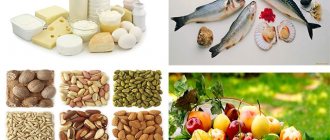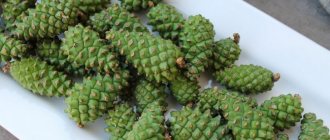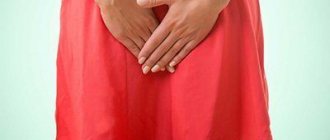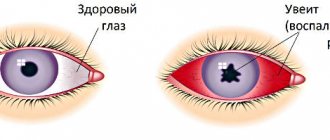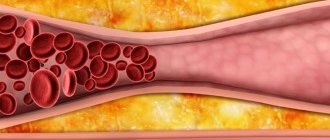General rules
The diet is based on the principles of naturopathic physician James D'Adamo, who argues that a person's blood type and nutrition are closely interrelated.
The blood type diet is based on the postulate that in the process of human evolution, the composition of the blood changed and was closely correlated with the type of food consumed by the vast majority of the population of a particular time period. At different stages of human evolution, different methods of social labor prevailed (hunting, farming, domestication of wild animals), which formed the basis of their diet (meat, plant foods, dairy products) and the type of metabolism. Accordingly, according to the author, the composition of the blood also changed (groups I, II, III and IV). It is on this statement that blood group nutrition is built, the essence of which is the need to include in the diet of a person with a specific blood group food products that correspond to it and exclude/minimize foods that do not correspond to it.
Despite the presence of a certain logic in this statement, there is no evidence-based scientific basis for separate nutrition according to blood groups. However, it is impossible to categorically state that this is the right diet or the wrong one, since the blood type diet is more or less balanced in the main food nutrients and, unlike various kinds of strict mono- and express diets, is soft and designed for a long period, which suggests a lasting effect. Some idea of the suitability of food products for people with different blood types is given by the table below of nutrition by blood types.
| Blood type | I ( O) | II ( A) | III ( B) | IV ( AB) |
| Recommended Products | Dietary red meat (lamb/beef), cod, red pike fish, olive oil, figs, beets, walnuts, pumpkin seeds. | Seafood, legumes, soybeans, rice, vegetable oils, buckwheat, artichoke, soy products, pineapples, Jerusalem artichoke, vegetables. | Olive oil, lamb, goat's milk cheese, rabbit, oatmeal, flounder, mackerel, cod, rice, parsley plums, white cabbage. | Wheat bread, dairy products, turkey meat, lamb, mackerel, oatmeal, cod, corn oil, cranberries, kale, pineapples. |
| Limited Products | Fatty meats, cheeses, dairy products, cottage cheese, pasta and flour products, potatoes, corn/peanut oil, strawberries, tangerines, olives, melon, oranges, avocados. | Wheat bread, ketchup, mayonnaise, potatoes, apricots, cranberries. It is advisable to exclude meat and various meat products from the diet. | Rye bread, beef, pork, chicken, goose, shrimp, anchovies, heart, lobster, eel, corn, sunflower, peanut butter, buckwheat, tomatoes, persimmons, pomegranates. | Whole milk, beef, duck, bacon, pumpkin seeds, flounder, crab, olive oil, salmon, beans, buckwheat, bananas, radishes, pomegranates, avocado. |
| Foods that cause weight gain | Legumes, wheat, corn, cabbage/cauliflower. | Dairy products, beans, meat, wheat. | Buckwheat, corn, peanuts, lentils, sesame. | Beans, corn, buckwheat, wheat, red meat. |
| Products that reduce body weight | Seafood, red meat, liver. | Soy products, vegetables, pineapples, vegetable oils. | Red meat, low fat dairy products, eggs, liver, green vegetables. | Green vegetables, dairy products, seafood (except dried, canned, smoked and dried), soy products, pineapples. |
Diet according to blood group 1
The diet for 1 positive blood group is based on the inclusion in the diet of mainly products containing proteins of animal origin. The diet of people of this blood type must include lean varieties of red meat (beef/lamb), offal (heart, liver, lungs), turkey meat, sea/river fish (herring, sturgeon, trout, halibut, perch, salmon, mackerel, cod , sardine, pike), excluding salted, smoked and pickled fish.
Other products containing animal protein (dairy products, chicken eggs) are poorly digestible, with the exception of cottage cheese and can be consumed in very limited quantities. It is recommended to replace them with soy milk/tofu, but soy products can be consumed as additional, but not main ones.
Additional sources of protein include seeds (pumpkin seeds) and walnuts. It is mandatory to include olive and flaxseed vegetable oils in the diet, avoiding corn, peanut and cottonseed oil. It is useful to include seaweed and red wine in your diet. Persons with the first blood group are advised to avoid eating white wheat bread, corn, oatmeal, millet and wheat cereals, replacing these products with rye bread, rice bread, buckwheat and barley cereals.
The diet for blood type 1 includes foods that promote weight loss - artichoke, Chinese cabbage, broccoli, spinach, Jerusalem artichoke, beet leaves, leeks, radishes, spinach, broccoli, parsley, garlic, horseradish, pumpkin, plums, figs. Neutral fruits and vegetables include mushrooms, zucchini, daikon, ginger, fennel, tomatoes, dill, quince, watermelon, pears, apricot, peach, cherry, gooseberry, and grapes.
Poorly digested and undesirable for weight loss: eggplants, avocados, white/red cabbage, Brussels sprouts and cauliflower, black olives, potatoes, tangerines, oranges, strawberries, wild strawberries, melon. Among the drinks, linden/rosehip tea, plum and pineapple juice are especially useful, as they speed up metabolism. It is not recommended to consume chocolate, ice cream, strong coffee, cola, and black tea.
From the vegetable group, the diet of the first group should include Chinese cabbage, artichoke, Jerusalem artichoke, spinach, leek, garlic
Nutritional recommendations for people with this blood group are given regardless of whether they have a positive or negative Rh factor. Nutrition for the first Rh-positive blood group is similar to nutrition for the Rh-negative blood group. Below is a table systematizing the list of recommended, neutral and prohibited products for people with blood type 1.
Table of foods for blood group 1
| Recommended | Neutral | Prohibited |
|
|
|
Diet according to blood group 2
The diet for positive blood group 2 is based on products of plant origin and is close to vegetarian diets. Including meat products in the diet for people with positive/negative blood type 2 does not make sense, since it is poorly digestible and promotes fat accumulation. Sometimes you can eat skinless chicken or turkey, which are neutral. The main sources of animal protein are seafood, fish and soy products (tofu cheese, milk).
Particularly useful include: trout, carp, pike, perch, whitefish, cod, mackerel, sardine. It is recommended to eat fish together with vegetables. Dairy products, with the exception of kefir, are also not advisable in the diet. Chicken eggs in the amount of 1-2 pieces per week. Healthy cereals include: buckwheat, sprouted wheat grains, brown rice, bread made from sprouted wheat grains, but you should not overuse cereal products - 2-3 times a week.
All soy products are especially beneficial for the second blood group.
The menu for the second positive blood group should be dominated by vegetables and fruits, both raw and cooked. It is especially recommended to include broccoli, garlic, pumpkin, chicory, green beans, spinach, onions, carrots, apricots, plums, grapefruit, blackberries, strawberries, lemon, cherries, pineapple, and raspberries in your diet. According to reviews, the best effect is achieved by consuming fruits that grow in the region where you live. Various nuts (peanuts), seeds, and green tea are extremely beneficial.
Dietary food for the second blood group allows the use of olive/linseed vegetable oil as fats; it is recommended to exclude animal fats from the diet altogether. In moderation and no more than 3 times a week, you can drink red table wines after meals. A generalized table of recommended, neutral and prohibited foods for people with blood type 2 is given below.
Products for the second blood group
| Recommended | Neutral | Prohibited |
|
|
|
Diet according to blood group 3
The diet for positive blood group 3 includes a fairly diverse set of foods. Persons with 3 positive/negative blood type are relatively “omnivores” and can consume most meat and dairy products (except pork and chicken), lean fish, eggs, cereals (except wheat and buckwheat), mushrooms, legumes and almost all types vegetables/fruits, with the exception of olives, corn, pumpkins, tomatoes.
Undesirable products are crustaceans and various types of mollusks, fish caviar, waterfowl eggs, sunflower oil, nuts and seeds, food gelatin, legumes, cheese, ice cream. Equally important for weight loss is the balance of eating different types of grains.
For people with blood type 3, the diet includes veal, chicken, rabbit, lamb and game
By excluding buckwheat/corn groats from the diet, the amount of other types of grains should be minimal. From the list of vegetables and fruits, it is necessary to exclude radishes, radishes, eggplants, pomegranates and persimmons, avocados, as well as some spices - white / black pepper.
Dry red/white wine is allowed. Nutrition for the third blood group, as evidenced by reviews of those practicing such a diet, is complete and easily tolerated. The table below gives an idea of the diet of people with this blood type.
Products for blood group 3
| Recommended | Prohibited | Neutral |
|
|
|
Diet for group 4
The diet for positive blood group 4 is moderately mixed - meat (turkey, lamb, rabbit), fish (ocean herring, sturgeon, tuna and sardines), seafood, lactic acid products, cheeses, chicken/quail eggs, olive oil, soybean curd, soybeans, lentils and beans, peanuts, walnuts, cod liver, cereals (except buckwheat/corn), non-acidic vegetables separately and in salads (excluding pepper).
The diet of persons with 4 positive/negative blood group involves the consumption of a wide range of cereal products (oats, rice, rye, millet, buckwheat). And wheat in the diet for weight loss may be present in limited quantities or completely excluded. Among vegetables, tomatoes and potatoes, which are undesirable in the diet of other groups, are optimal, and radishes, artichokes and bell peppers should be excluded. Among fruits, plums, grapes and most berries are suitable.
One of the most important features of this blood test diet is the inclusion of sea salt in the diet instead of table salt. All varieties of pepper are excluded, other spices are neutral. Juices with an alkaline reaction only - grape, cranberry. According to reviews, the diet for people with blood group 4 is easily tolerated.
Products for blood group 4
| Recommended | Prohibited | Neutral |
|
|
|
Authorized Products
Dietary diet according to blood types includes:
- For people with blood type 1 - meat in the form of beef/lamb, various offal (lungs, brains, liver, heart). The presence of sea/river fish (sole, halibut, perch, sturgeon, mackerel, trout, herring, cod, sardine, pike) is mandatory in the diet. Any bread that does not contain gluten is well digested - rice, soy and rye bread. Cereals: buckwheat, rice, barley. From the vegetable group, the diet should include: Chinese cabbage, artichoke, beet leaves, parsley, broccoli, Jerusalem artichoke, spinach, leek, garlic, pumpkin, radish, horseradish; fruits - plums, figs, pineapple juice, plums, which help increase metabolism. The following are allowed in smaller quantities: grape and apricot juice, cranberry juice, grapefruit juice. Olive/linseed oil is recommended as vegetable fats. It is recommended to consume green tea, seaweed, beer, hawthorn/chamomile infusion, red/white wine.
- For persons with blood group 2 - sea/river fish (mackerel, trout, cod, perch, carp, whitefish, sardine). All soy products are especially healthy - tofu cheese, milk. Most dairy products (goat milk, kefir, processed cheese, yoghurts, Feta, Mozzarella, Ricotta cheeses). It is important to have flaxseed/olive oil, green beans, sprouted grains, legumes, and buckwheat in the diet. Among vegetables, it is important to include in the diet beet leaves, Jerusalem artichoke, kohlrabi, broccoli, artichoke, red onion, Romaine lettuce, spinach, garlic, leek, chicory, horseradish; fruits - apricot, lingonberry, pineapple, cherry, grapefruit, cranberry, fig, blueberry, lemon, plum. Recommended drinks include water acidified with lemon juice, grapefruit juice, green tea, hawthorn/rose hip decoction, and red wine.
- For persons with blood type 3 - meat (veal, chicken, rabbit, lamb, lamb, game), liver, milk, dairy/fermented milk products, eggs, soy products, cereals - rice, oats, millet, millet. The presence of fish (perch, halibut, salmon, pike, cod, mackerel, hake, sardine), vegetables (red pepper, carrots, cabbage, eggplant, parsley), and mushrooms in the diet is mandatory. Herbal teas, grape, pineapple, cranberry, cabbage juice, dry red/white wines, which are recommended to be consumed after meals in small quantities, are useful.
- For persons with blood group 4 - meat (lamb, turkey, rabbit), fish (hake, mackerel, pike, salmon, sardine, cod, perch), cod liver, lactic acid, cheeses, olive oil, soybean curd, walnuts and peanuts , various cereals (rice, oatmeal), rye and soy bread. Vegetables in the diet should include eggplant, cauliflower, cucumbers, parsley, broccoli, horseradish, garlic, beans, and celery. Fruits such as cherries, lemon, pineapples, grapefruit and grape juices, kiwi, and plums are useful. Recommended drinks include green tea, chamomile, hawthorn, and mint teas.
Fully or partially limited products
The diet of individuals by blood type excludes the following foods:
- For people with the first blood group - pork and goose meat. It is not recommended to consume smoked fish, caviar of any kind, large amounts of butter, chicken eggs and dairy products. It is prohibited to consume cottage cheese, fermented milk products (any type of yogurt, kefir, fermented baked milk), processed cheeses, whey, whole/diluted cow's milk. Excluded from the diet: white bread, cereals made from wheat, corn and oatmeal, cottonseed, peanut, corn, vegetable oil, ketchup, marinades. Undesirable vegetables: eggplants, cabbage (Brussels sprouts, cauliflower, white/red cabbage), mushrooms, potatoes, black olives. Oranges, strawberries, melon, tangerines, strawberries, avocados, blackberries, as well as apple, cabbage, orange juice, all types of drinks with sugar substitutes, alcoholic cocktails with vodka, coffee, cola, black tea are subject to restrictions.
- For people with blood type 2 - some types of fish (flounder, anchovies, herring, halibut, beluga), caviar, smoked salmon, seafood (squid, octopus, crab, lobster, shrimp), crayfish, oysters. It is not recommended to consume butter, whole/skim milk, cream and hard cheeses, ice cream, milkshakes, white bread, kefir, yoghurts, processed cheese, goat milk, confectionery, and cereals. As for fats, cottonseed, corn, peanut, sesame vegetable oil, margarine, butter, and solid animal fats should be excluded from the diet. It is not recommended to consume certain types of vegetables and fruits: red and white cabbage, tomatoes, eggplants, red hot peppers, potatoes, black olives, mushrooms, bananas, oranges, rhubarb, tangerines, as well as tomato/orange juices, cocktails with vodka, beer , Coca-Cola, soda drinks, black tea.
- For people with blood type 3 - pork, chicken, goose, fish caviar, legumes, buckwheat and wheat, legumes (lentils, peas, beans), crabs, hard cheese, pumpkin seeds. Vegetables excluded: radishes, tomatoes, radishes. Consumption of sunflower oil, white/black pepper, ice cream, persimmon and pomegranate, and strong alcoholic drinks is not allowed.
- For people with blood group 4 - pork, goose, veal, ham/bacon, butter, seafood. It is not allowed to consume sunflower oil, apple cider vinegar, corn, buckwheat, wheat, or sunflower seeds. Vegetables/fruits prohibited: radishes, radishes, peppers, oranges, mangoes.
Basic principles
It has been proven that excess weight and many diseases in 90% of cases are the result of poor nutrition. Having heard from a doctor the phrase that you need to follow a diet, many patients fall into despair, because for most of them it is quite difficult to limit themselves in nutrition. The blood type diet helps you lose extra pounds and prevent the development of various diseases without much difficulty. The patient does not have to count calories and give up favorite foods. All you need to do is exclude only some foods from your diet, and the desired result will not take long to arrive.
American physician James D'Amado, as a result of his many years of research, suggested that each blood group has its own positive, negative and neutral products. The scientist argued that dishes that are healthy for some people can be harmful to other patients. Based on this, we can conclude that nature itself tells a person what kind of food he should eat.
Reviews of the blood type diet and results
Nutrition according to blood groups, as evidenced by reviews from people who practice this diet, causes a lot of disagreement, both in terms of evidence for this theory and in practical application.
- “...The blood type diet interested me and my friend almost a year ago. We read various information on the Internet and decided to try it, despite the fact that reviews from doctors were generally negative. It was the hardest for me, since I have a positive blood type 2 and I had to change my usual diet to a greater extent. I can’t consider myself a meat-eater, but, nevertheless, I really love and often eat chicken dishes. I had to give up a lot and switch to more plant-based foods. The fish helped a little. I didn’t like soy products and tofu cheese at all; I got used to eating yogurt every day. To be honest, I barely made it through one month, because I had intestinal problems from the large amount of fiber. The results are not so hot - 2.7 kg. For my friend, everything was easier because she has a positive blood type 3 and her diet was much wider and did not require any special adjustments to her diet. She only had to adjust it a little. She has been following this diet for three months now, and although she hasn’t lost as much weight in two months as she wanted and she still needs to lose 5 kg before her goal, her health has improved significantly, as has the condition of her hair and skin.”
Special power system
It is difficult to say when the idea of building a nutritional system based on erythrocyte hereditary characteristics first appeared.
But the starting point was the release of a book by Peter D'Adamo devoted to studying this issue. The book was published in 1990 and immediately won everyone's attention. More than a quarter of a century has passed, and the theory of nutrition based on group division is still relevant. Thousands of people around the world are guided by the principles of a healthy lifestyle.
The essence of the method, voiced by an American naturopath, is that there is no single nutritional system that would be ideal for the entire population of the planet. Over millions of years of evolution and formation of the immune system of the human body, a certain ability to assimilate some foods better than others has developed.
People's lives were also not identical. There were different areas of human activity, the first of which were agriculture and hunting. At present, according to d'Adamo, the descendants of ancient farmers are more adapted to assimilate food of plant origin than of animal origin. The recommendations collected for creating a daily diet are accessible and understandable to everyone. The general principles of the nutrition system are divided into four groups.
